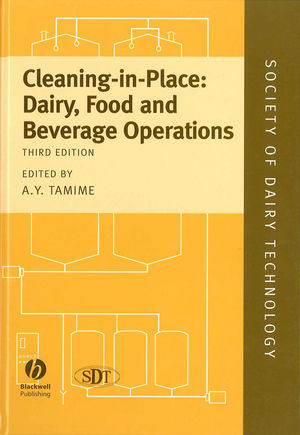

Most ebook files are in PDF format, so you can easily read them using various software such as Foxit Reader or directly on the Google Chrome browser.
Some ebook files are released by publishers in other formats such as .awz, .mobi, .epub, .fb2, etc. You may need to install specific software to read these formats on mobile/PC, such as Calibre.
Please read the tutorial at this link: https://ebookbell.com/faq
We offer FREE conversion to the popular formats you request; however, this may take some time. Therefore, right after payment, please email us, and we will try to provide the service as quickly as possible.
For some exceptional file formats or broken links (if any), please refrain from opening any disputes. Instead, email us first, and we will try to assist within a maximum of 6 hours.
EbookBell Team

4.3
8 reviewsThe book addresses the principles of cleaning operations, water supply issues and the science of detergents and disinfectants. Aspects of equipment design relevant to ease of cleaning are covered in a special chapter, as is the assessment of cleaning efficiency and the management of cleaning operations. This third edition features for the first time a chapter on membrane cleaning - a relatively new area requiring very specialised cleaning products and procedures. Useful data on fluid flow dynamics and laboratory test methods are also included in separate chapters.
Authors have been selected from within industry, allied suppliers and academia to provide a balanced, leading edge assessment of the subject matter. Cleaning-in-Place is directed at dairy scientists and technologists in industry and academia, general food scientists and food technologists, food microbiologists and equipment manufacturers.Content:
Chapter 1 Principles of Cleaning?in?Place (CIP) (pages 1–9): Mr M. Walton
Chapter 2 Fluid Flow Dynamics (pages 10–31): Dr M. J. Lewis
Chapter 3 Water Supplies in the Food Industry (pages 32–55): Mr S. I. Walker
Chapter 4 Chemistry of Detergents and Disinfectants (pages 56–80): Mr W. J. Watkinson
Chapter 5 Designing for Cleanability (pages 81–107): DR A. P. M. Hasting
Chapter 6 Perspectives in Tank Cleaning: Hygiene Requirements, Device Selection, Risk Evaluation and Management Responsibility (pages 108–145): Mr R. Packman, Mr B. Knudsen and Mr I. Hansen
Chapter 7 Design and Control of CIP Systems (pages 146–163): Mr D. Lloyd
Chapter 8 Assessment of Cleaning Efficiency (pages 164–177): Dr K. Asteriadou and Professor P. Fryer
Chapter 9 Management of CIP Operations (pages 178–194): Dr K. J. Burgess
Chapter 10 Membrane Filtration (pages 195–222): Mr C. E. Askew, Dr S. te Poele and Mr F. Skou
Chapter 11 Laboratory Test Methods (pages 223–242): Mr W. J. Watkinson